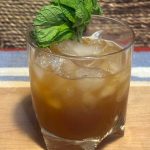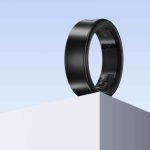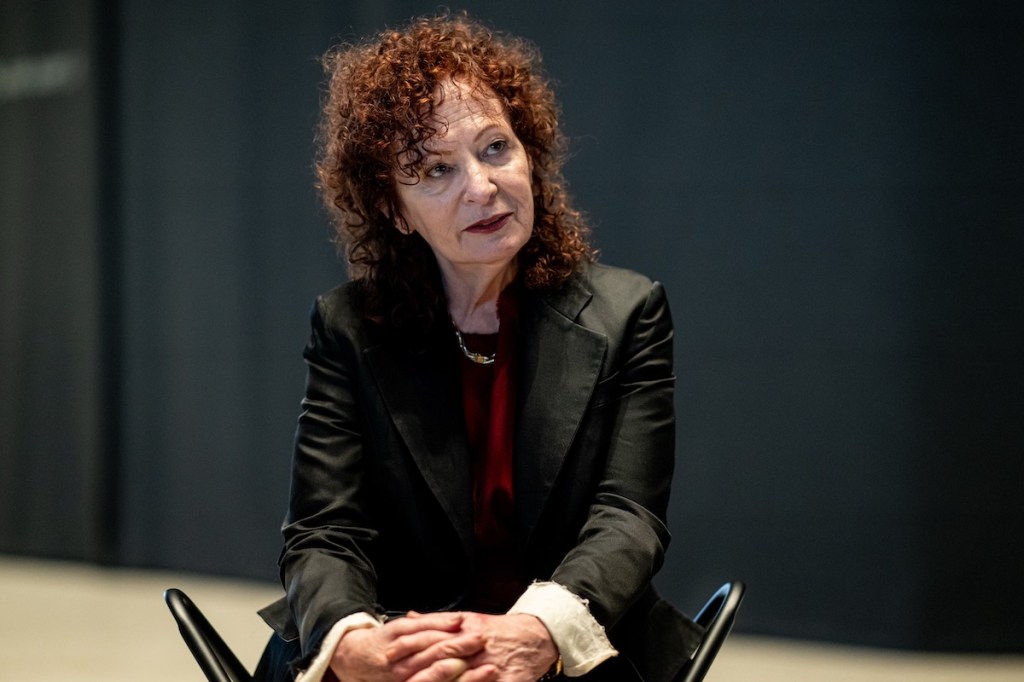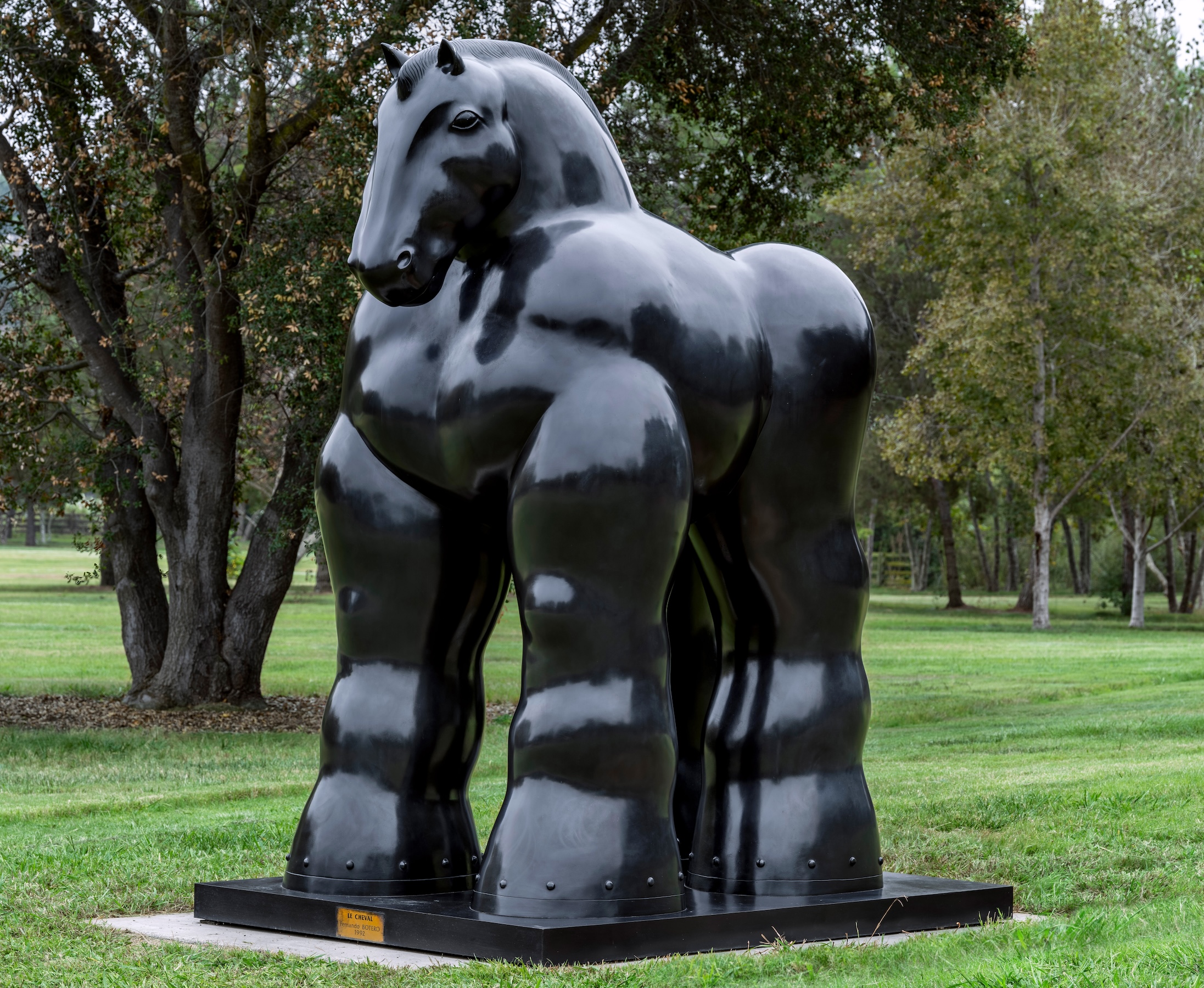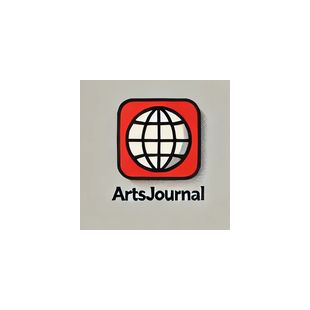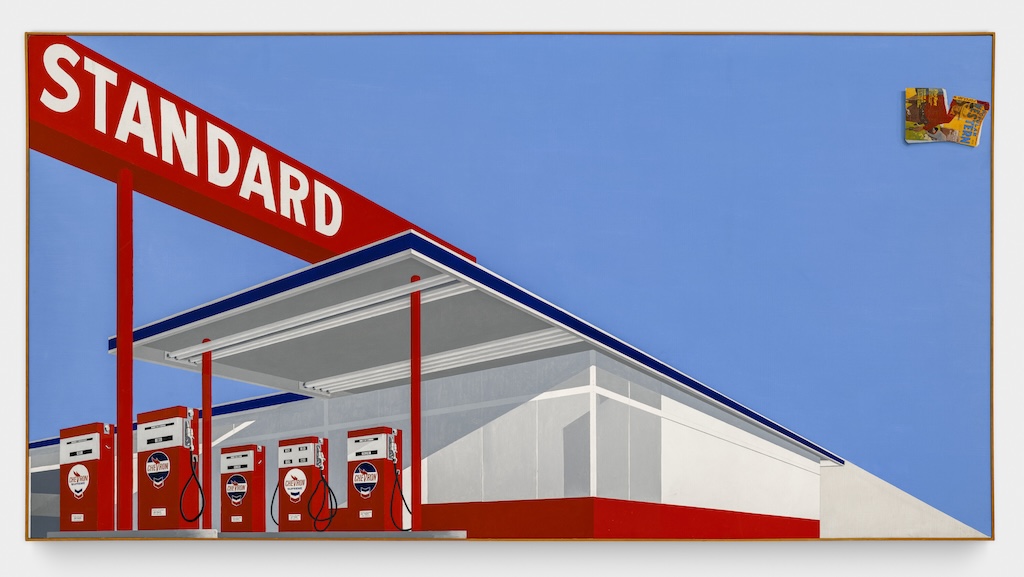Pardon the binary thinking, but the multimedia Kenya-born artist Wangechi Mutu has turned the New Museum into a magical matriarchy. Or something close. It has become an enveloping, shadowy place shot through with flaming color, incalculable beauty, but also disease and violence.
Hybrid creatures populate both the artist’s extravagant collages and startling sculptures, variously merging human and animal (or plant), alien and earthling, and female and male into assertive female-leaning beings. An interest in fusing opposites is suggested in the show’s title, “Wangechi Mutu: Intertwined,” taken from a 2003 watercolor collage of two dance club habitués — young, scantily clad women with the heads of wild African dogs on the second floor.
Mutu, who was born in Kenya in 1972, attended boarding school in Wales and came to New York in the early 1990s, earning a B.F.A. from the Cooper Union and an M.F.A. from Yale. Since 2015, she has lived primarily in Nairobi, but maintains a studio in Brooklyn.
With its combination of mostly dark brown walls, a few white ones that seem to be sprouting weeds and, in the gallery focused on disease, one painted blue with red gouges, this show might well be seen as theatrical. But that word implies painted stage-flats and hollow props, which are far removed from anything Mutu does.
Fantastic as they may be, Mutu’s beings are solid and real with a high degree of what might be called local specificity. It’s as if she wants to make as tangible as possible a world free of divisions between races, genders and species. She has a great way with combining materials, whether she is working with the red soil (mixed with paper pulp and glue) and the tree limbs of her Kenyan homeland, the cast bronze associated with the peaks of civilization, or faces and figures cut from or inspired by fashion or porn magazines or National Geographic. Any of her efforts can be embellished with fragments of bone and shell or fake pearls and shiny metal beads.
Her collages, sculptures and videos examine the exploitation, resilience and grandeur of Black women, as social, spiritual and mythic beings. “Seeing Cowries” (2020) is a tarry pyramidal form, studded with cowrie shells, which once served as currency and tools of divination. The shifting associations of this strange but appealing entity include a Voodoo priestess in flowing robes, a meditating Buddha or Madonna and Child sitting on the ground (note the bare foot). Yet it can also look like an ugly deep-sea fish, greedy for light.
“Mutu: Intertwined” fills the three main gallery floors of the museum and extends to the lobby gallery and the seventh floor. It follows the artist’s trajectory in a loose chronology up through the museum, to the triumphal fourth floor. Here some of her latest bronze sculptures are joined by six just-finished collages, denser and more mysterious than before. They are apparently composed on top of verdant nature photographs vigorously painted with patterns and flowers that suggest jungles. Often an image of the artist, or her face, is embedded at the center. They might be retorts to the grandiose paintings of Anselm Kiefer.
Many will find this show full of surprises — I certainly did. It enlarge Mutu’s achievement considerably — especially as a sculptor. Its surprises may reflect the fact that well over half of roughly 115 pieces on view have never been seen in New York City, which seems unusual for a major museum. And none, I would venture, have been so lavishly contextualized by the artist’s other work as here.
Mutu usually stars in and always directs her own videos, of which there are seven here. Some are pastoral, like “My Cave Call,” from 2021. Others can be harder-hitting although still metaphorical. The stark yet somehow musical “Cutting” (2004) consists of six minutes of the artist, silhouetted against the sky, methodically clanging on a log with a machete, like those used to such deadly effect in the Rwandan genocide. Others can be both, like the panoramic “The End of Carrying All,” a three-channel color animation whose broad screen helps light the third floor. Seen at the Venice Biennale in 2015, it shows a woman (Mutu) balancing a heavy basket on her head as she struggles up a hill, through plagues of locusts and birds; at the top she turns into a glittery translucent blob and wreaks temporary havoc on the landscape.
There doesn’t seem to be anything Mutu can’t manage. When the strains of “Amazing Grace,” sung a cappella by the artist, wafts through a stairwell leading to the fourth floor, it is Mutu providing the soundtrack (and laid-in backup) for a short video of the same name in which she walks into the shimmering sea, clothed in white, in an act of self-baptism and meditation.
The intertwined concept registers right away with two sculptures in the lobby gallery. “In Two Canoe,” (2022) features two larger-than-life plant people half made of big leaves — in softly patinated green bronze. Mangrove vines extend their limbs into the floor outside their vessel — as if plunged into water, as suggested by a narrow shoreline (with mountain) molded from rescue blankets along the walls. Nearby, the blankets form an island on which stands a figure both bisected and somewhat caged by wood branches, studded with tiny bells and cloyingly titled “For Whom the Bell Tolls” (2019).
Progressing upward, we see Mutu pushing her ideas. The second floor includes her unprepossessing but charming early sculpture: the “Bottle People Series,” modest glass bottles humanized with headdresses and such, made in 1997, while she was at The Cooper Union.
The rapid growth of the collages dominates this floor. One group of around 15 hung salon-style includes the tiny “Who Nose” of 1998 — a woman’s face with an image of female legs in striped stocking protruding from its nostrils, which might be an early example of Pictures Generation art. In “Alien Faces 4,” the careful layering of mismatched facial features creates a beautifully distorted visage. It is attached to a head and shoulders defined by orange and black ink that resembles a silken swath of tie-dye but also gangrene. Suddenly Mutu starts looking like an heir to the German collagist Hannah Höch.
Then come numerous examples of the big, gorgeous, fraught collages from the 2000s for which Mutu is best known. In “Riding Death in My Sleep” (2002), a woman with a Kabuki white face crouches on a curving black mass riddled with mushrooms. Her lithe body is covered in ravishing dots of color that could be her skin, a high-end leotard or a life-threatening rash.
On the third floor, the sculpture prevails in different forms and materials. Works in red soil and wood include “Sentinel I,” which has a fashion model slouch, titled be damned, and several pieces from the 2018 “Fertility Heal” series, whose open, symmetrical forms call to mind masks, human pelvises and animal skulls. In the brilliant, complex “The Glider” and the Surrealistic odalisque of “Outstretched,” the soil has been mixed with charcoal, creating a soft, matte black. And the long thin “Sleeping Serpent” is a soft sculpture sheathed in a shiny black fabric complete with faux scales whose tackiness is offset by its subtle, unexpected head — that of a slumbering woman in blue ceramic.
On the fourth floor, all the sculpture are bronze, including two enormous baskets, one occupied by a giant snake, the other filled with skeins of hair, some of them tinted red, as if bloodied. Such realism seems out of character. Strange is more familiar, as in the also massive “Crocodylus” — inspired by a famous Naomi Campbell fashion shoot — in which a crocodile and its female rider are united by their patterned skin, whose scale and deep grooves verge on the architectural.
Especially outstanding is “The Seated I” a regal female figure in deep red bronze whose form is wrapped horizontally in thick coils. This ingenious treatment results in a powerful garment — one fit for an Afrofuturist queen or a classical goddess from ancient Greece. It also honors the universal coil technique of hand-built clay vessels, which seems right for an artist as focused on making things as Mutu. The figure is one of a group of four optimistically titled “The NewOnes Will Free Us” that inaugurated the Metropolitan Museum of Art’s program of commissions for the niches on its Fifth Avenue facade in 2019. Maybe some day the group will be installed permanently in the Met’s niches. In the meantime, see one of its number, installed in a niche-like space on the New Museum’s fourth floor until early June.
This show, which should well make lots of Top 10 lists of the year, was organized by Vivian Crockett and Margot Norton, assisted by Ian Wallace. It reveals Mutu to be one of the best artists of her generation, using her innate versatility to demonstrate diversity as essential to life, real or imagined.
Wangechi Mutu: Intertwined
Through June 4, The New Museum, 235 Bowery, Manhattan, newmuseum.org.




